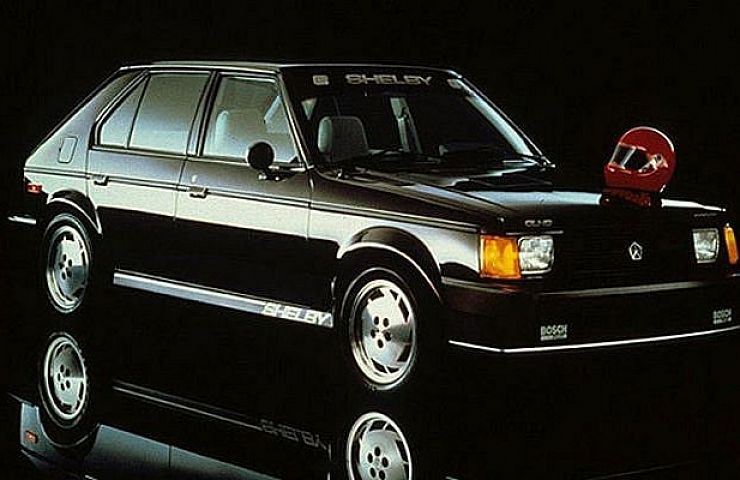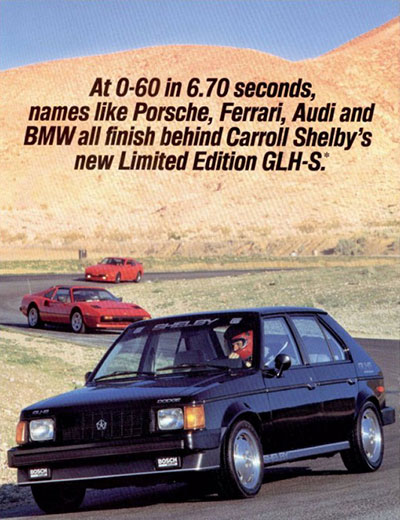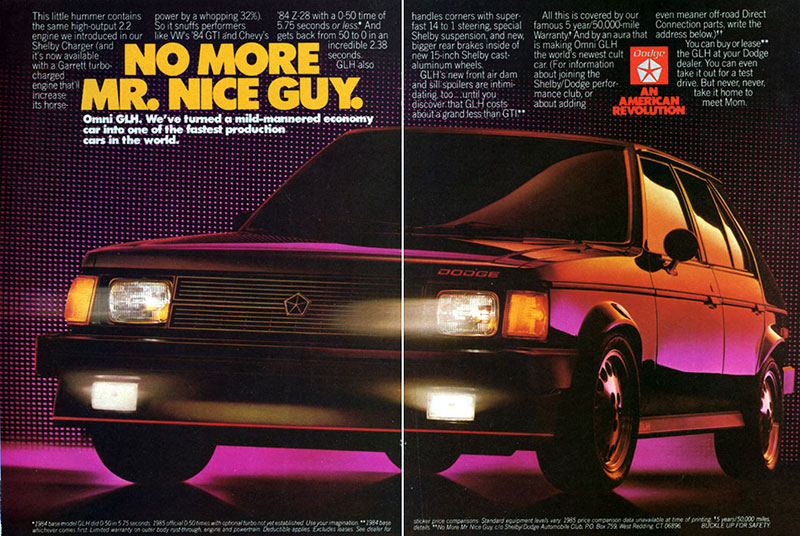When it comes to 1980s-era Mopar-flavored hatchbacks, there are really only two models you need to familiarize yourself with: the Omni GLH and the Omni GLHS.
If you’ve ever wondered whether car companies have a sense of humor, look no further than this tiny front-wheel-drive econobox. It was tapped on its diminutive shoulder in 1984 by none other than Carroll Shelby—to become the standard bearer for performance for the Dodge line-up.
Yeah, it was a strange time to be interested in affordable sports cars. On paper, the Dodge Omni was anything but fun-to-drive, managing just 75 horsepower from its 1.7-liter, four-cylinder engine (borrowed from Volkswagen and thrust into a subcompact platform based on Chrysler’s 1978 European Simca model). It took seven years and a number of design tweaks—including the production of the miserable “Miser” model—for Dodge to consider building a go-fast variant of its loss leader.
Carroll Shelby’s Hatchback
The initial step in the Omni’s evolution was to ditch the laundry list of sad four-cylinders that had shared its engine bay, and put in a 110 horsepower 2.2-liter four-banger. Then, that was quickly replaced by a turbocharged version of that same motor the following year—bringing 146 horses to the table.
The first Omni GLH didn’t have Shelby’s explicit involvement. His shop played a role in tuning the cars—and his “goes like hell” descriptor provided the name for the vehicle. But it wasn’t until 1986 and the introduction of the GLHS that he fully endorsed the hot hatch.
It turned out to be quite the ringing endorsement. By upgrading several key components of the GLH’s turbocharged engine—including redesigning the intake manifold, installing bigger fuel injectors, and adding an intercooler—Dodge was able to turn up the boost to the tune of 175 horsepower and 175 pound-feet of torque in the GLHS (or in Shelby’s words, “Goes Like Hell S’More.”)
That translated into a 6.5-second run to 60 mph, which is still a respectable time in our modern era. A five-speed manual gearbox was standard with the GLHS, and it also gained Koni shocks, grippier tires, and a lower ride height to go with the thicker swaybars, upgraded brakes, and 15-inch alloy wheels carried over from the GLH. By 1985, the GLH and GLHS also gained an aggressive body kit that made it harder to mistake for a run-of-the-mill Omni.
Only 500 GLHS models were built. The 1986 model was the swan song for all turbocharged Omnis. They were scarce from the beginning. But considering Chrysler’s sketchy build quality from the period, and even the GLH—of which 3,129 examples were produced—is a rare find in drivable condition. Shelby later tuned a number of other front-wheel drive Chrysler products, including the Dodge Daytona. But the Omni was the tinder box that started the automaker’s fascination with forced-induction compacts.
See Complete Engines for Dodge Omni for sale on eBay.







